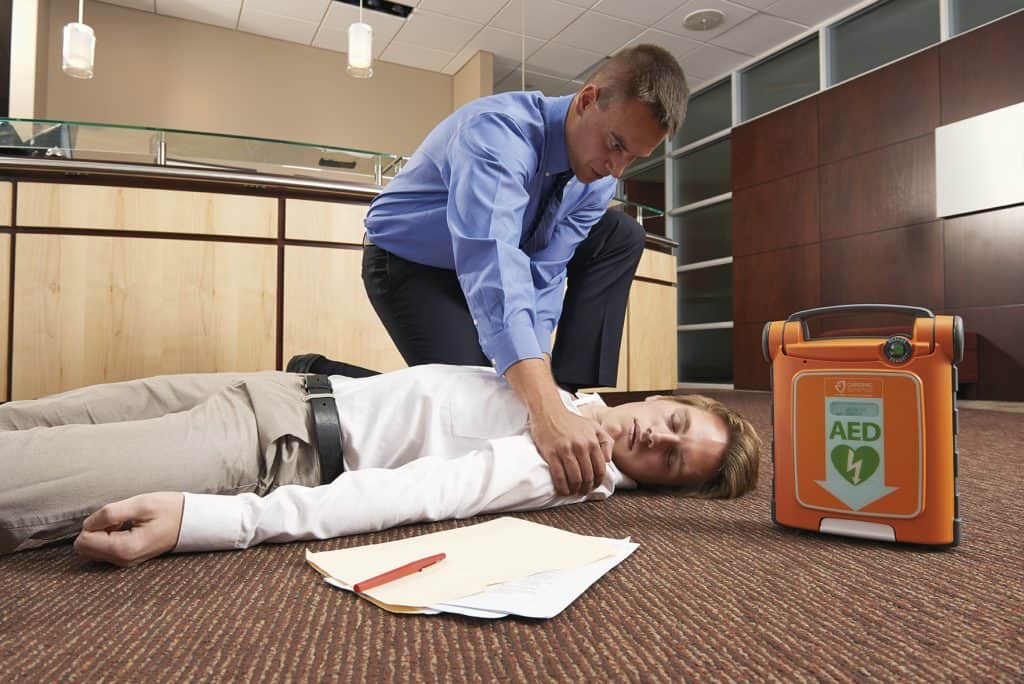Now, I know some of you may be wondering why exactly someone would be asking this sort of question. How many normal people actually carry around a taser in case of an emergency? And if there’s a cop around with a taser, couldn’t he just call an ambulance to get a defibrillator instead of taking such a risk?
All good questions, but let’s say the cop calls for an ambulance and it takes over 20 minutes for one to arrive. Cases in which you’d need a defibrillator are life or death, and action must be taken immediately to ensure your best chances of survival. In this situation, the taser could be used during that 20 minutes while the ambulance is on its way to take over medical care.
That is, if a taser can even be used as a defibrillator. So, is this even possible?
Unfortunately, no. A taser cannot be used as a defibrillator, and will overall not have any effect on the heart. Since a taser delivers the same electrical frequency as your muscle’s nerve signals, a taser will only cause all the muscles in your body to contract at once, rather than re-set the normal rhythm of the heart muscle’s contractions.
If you’re concerned about not having an emergency defibrillator handy (especially in families and households with a history of heart health issues), you have the option of purchasing an AED (automated external defibrillator) which will do the trick. You can purchase both in-home and portable versions online. Here’s the one we recommend.
- AED defibrillator designed for ease of use and prompt response
- Step-by-step voice commands and CPR guidance provide real-time guidance
- Easily converts to an AED trainer when you attach training pads (sold separately)

What is a Taser?
By definition, a taser is a device used by both law enforcement and civilians which supplies an electrical shock to the entire body, causing it to go rigid and temporarily paralyzed. A taser can be fired up to 35 feet in order to tase
Cool, right? Since they use compressed nitrogen to launch the darts, they are not considered legitimate firearms, and can thus be purchased and used by normal civilians such as you and I. More info about the history of tasers and how they work can be found here.
What is a Defibrillator?
A defibrillator is a medical device used to control heart fibrillation (which means an abnormal, uncoordinated, or irregular heartbeat). It provides a shock to the heart to reinstate a normal
In case of an emergency, a defibrillator can be used to save a life, and versions of them can be found not only in hospitals, but in most airports, stores, schools, and most high traffic areas. Info about the locations and appearance of these AED boxes can be found here.
You can also watch the following video to get more information about heart health, defibrillators, and AEDs:
What’s the Difference?
Tasers supply 0.36 joules of electricity per second, while a defibrillator supplies approximately 200-400 joules per second. This makes defibrillators much stronger than
In addition, a taser supplies a shock or series of shocks to a single part of the body, while a defibrillator specifically targets the heart by supplying a shock through the chest cavity from the right pad to the left, transmitting the shock through the heart. This means there can’t be a correlation between restarting a heart’s normal rhythm and a taser.
What’s the Research Say?
According to a recent study by cardiologist Dr. Douglas Zipes from Indiana University Health, six out of eight men studied developed severely abnormal heart rhythms after being tasered. After further investigation, however, it was found that the study wasn’t reliable, and a research team retaliated against the study’s claims by performing their own study at Wake University School of Medicine in North Carolina.
The counter-study observed over 1,200 cases in which the use of a taser did not only not cause abnormal
In addition, a previous study from 2007 found that tasing victims with pacemakers or ICD generators (heart devices that re-establish abnormal heart rhythm in patients with more severe heart conditions) were not affected by taser shocks directed towards the chest. These results only serve to further prove that a taser would not work as a defibrillator, since it seems that tasers don’t affect the heart at all. If they cannot affect the heart at all, then they certainly can’t be used to restart or regulate a heart’s normal rhythm.
Conclusion
So, can a taser be used as a defibrillator? Based on my research, I find that no, a taser cannot and should not be used as a defibrillator in any situation.
In a life or death situation, it is much better to either use the proper devices or wait for local emergency services to reach you, rather than potentially further harming someone who’s already in a pretty serious situation (seriously, you don’t want to injure a guy who’s in the midst of a heart attack, unless you want to further shorten his life).
Again, if you’re worried about having the proper device on hand in case of an emergency, you can check out both permanently installed and portable AEDs for your house, office, car, or handbag. Here’s our favorite portable model you can get online.
- Optimized self-defense range: 15-foot Shooting distance, ideal for most defensive situations
- Powerful protection ensures a safe escape: 30-second muscular override gives you time to get away, and we'll replace your TASER device free of charge
- Effective up close: contact stun capabilities help at close range or in the event of a missed shot

